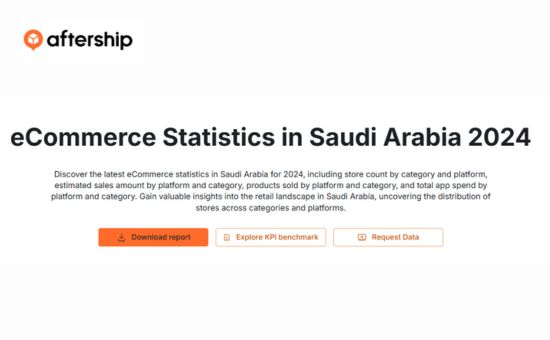The Apparel Market: Five Key Trends to 2025 | Retail Economics
E-Commerce & Retail |
Introduction
Apparel retailers are facing intense pressures from multiple fronts. The ongoing impact of the pandemic, the shift to online shopping, supply chain disruptions, and macroeconomic uncertainties have all compounded existing challenges. Fuel and raw material costs have surged, with cotton prices hitting record highs last year. Elevated transport costs, high return rates, and limited warehouse space are further driving up inventory expenses.
These disruptions are impacting some business models more severely than others. Luxury brands, with their pricing power and higher margins, can better absorb cost pressures. In contrast, fast fashion retailers, which rely on low prices, thin margins, and quick turnaround times, are more vulnerable.
Retailers and brands must adapt their strategies to remain relevant and meet the evolving needs and expectations of customers while contending with rising operating costs and persistent supply chain disruptions. This is especially challenging in an industry where profit margins have been declining for the past decade.
This report outlines five key trends that will shape the future success of UK fashion retailers:
- Shift to online: Massive growth comes at a cost
- Reimagining stores: Showrooms, micro-fulfillment, and personalization
- Digital innovation: Social commerce and the metaverse
- Supply chains: Mitigating disruption and cost pressures
- ESG & Circular economy: Transitioning from fast fashion to resale
These insights are valuable for retailers and related businesses to better understand key trends and enhance their strategic and advisory capabilities.
Trend 1: Shift to online: huge growth carries a cost
The COVID-19 pandemic has significantly amplified the role of digital channels throughout the customer journey, leading to a lasting shift in the share of apparel sales conducted online. Consumer preference for discovering and purchasing apparel online has become deeply ingrained. Retail Economics predicts that online sales will represent over half (50.4%) of UK apparel sales in 2022, up from 35% in 2019 before the pandemic. By 2026, online sales are expected to account for 60% of all apparel sales.

Digital shift across the entire customer journey
Digital technology is now central to most people’s daily lives, whether it’s for staying connected with friends and family, working remotely, or shopping. Its impact has become increasingly significant throughout every stage of the customer journey in the apparel industry. From discovering fashion brands and products to managing services and returns, many consumers have embraced digital-first experiences. These journeys have helped overcome initial hurdles like setting up online accounts, entering payment information, and building trust.
The shift to online comes at a cost
Pure online apparel retailers typically operate with much thinner margins than their physical or multichannel counterparts. Our analysis reveals that, before the pandemic (2015-2019), pre-tax profit margins for pure online apparel retailers across Europe averaged just 3.7%, compared to 13.4% for the overall apparel industry.
Even during the pandemic, when online retailers experienced a surge in demand that boosted profits, their pre-tax margins still fell below industry averages. While brick-and-mortar retailers face higher fixed costs due to their physical stores, they generally achieve greater profit margins per sale.
In contrast, pure online retailers, despite having lower fixed costs (e.g., fewer premises and employees), see smaller profit margins per item sold. This is largely due to significantly higher variable costs such as marketing, packaging, shipping, and managing higher return volumes.
Additionally, increased online transparency intensifies competition and reduces pricing power, leading to further margin erosion. Our research indicates that the growth of online sales during the pandemic diluted profit margins across the entire apparel industry, challenging retailers’ business models and cost structures.

Higher return rates
The shift to online shopping has led to a significant increase in product returns, especially in the apparel sector. While free and flexible return policies can boost online sales, they also encourage consumers to over-purchase, treating the process as a ‘risk-free trial’ rather than a ‘final purchase’—a practice known as ‘wardrobing.’ This trend is particularly prevalent in online clothing and footwear shopping, where sizes, styles, textures, and finishes are difficult to judge digitally.
Research by Retail Economics shows that the average return rate for online apparel purchases can reach as high as 27%, compared to around 12% for in-store purchases. Gen Z shoppers (under 24 years old) are the most frequent returners, returning nearly twice as many items as seniors (65+ years). Nearly half (44%) of Gen Z consumers order multiple variations of clothing and footwear online, far beyond what they intend to keep.
For retailers, increased return rates quickly erode profit margins. Processing returns is more costly and complex than handling outbound logistics, involving challenges like reintegrating products back into the supply chain, assessing their condition for resale, and processing refunds. The cost of handling a return can be up to twice that of the original delivery when accounting for labor, transportation, and warehousing.
Unlike in-store returns, which can be processed quickly, online purchases must be returned via courier, sent to a warehouse, unpacked, cleaned, and then re-shelved for resale. These extra steps can create inventory backlogs, leading to excess stock and markdowns as items miss their season.
Some fashion retailers are taking steps to discourage serial returners by charging customers for returns. For example, Next introduced such a policy in 2018, and Zara recently began charging for returns by post. However, items purchased online can still be returned in-store for free, which helps drive foot traffic to physical locations. Next reports that around 75% of returns are made in-store, reducing margin erosion and increasing the likelihood of repeat purchases.
For retailers without physical stores, the benefits of free “return to store” options are unavailable, and charging for returns without offering a free alternative could alienate shoppers. While there is no one-size-fits-all solution to the issue of returns, charging for them and using technology to help shoppers accurately assess products can make a significant difference. Successful retailers may need to invest in reverse logistics and stock management solutions, either in-house or through third parties, to minimize return rates and associated costs. They might also consider policies that incentivize in-store returns or discourage over-ordering. Subscription models offering free deliveries while building long-term customer loyalty are another potential strategy. Balancing convenient online returns with cost control remains a crucial and ongoing challenge for the apparel industry.

Discover key apparel market trends until 2025, from sustainability to digital innovation. Continue reading and download the full report.
The Table of Contents of “The Apparel Market: Five Key Trends to 2025″Report:
- Summary of trends
- Introduction
- Trend 1: Shift to online: huge growth carries a cost
- Trend 2: Reimagining stores: showrooms, micro-fulfillment & personalization
- Trend 3: Digital innovation: Social commerce & the Metaverse
- Trend 4: Supply chains: Mitigating disruption & cost pressures
- Trend 5: ESG & the circular economy: from fast fashion to resale
- Conclusion
- How Retail Economics can help
Number of Pages:
- 18 pages
Pricing:
- Free







